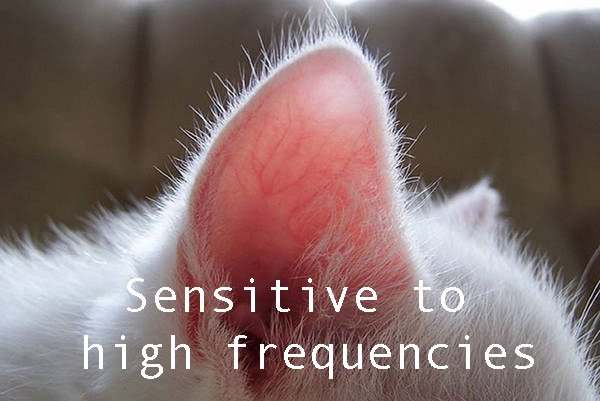
Whereas humans can hear up to 20,000 cycles per second (cps) or 20kHz, cats can detect sounds as high as 60,000 to 80,000 cps (80kHz).
At the low end of audible frequencies cats hear between 20 and 55 cps (20-55 Hz). Humans have a similar ability to detect low frequency sound.

The cat’s ability to detect high frequencies comes from the need to hear prey that uses high frequency sounds to communicate. The classic cat prey is mice. Mice communicate using squeaks ranging between 17,000 cps and 80,000 cps (17kHz-80 kHz). The cat is well able to detect these sounds and locate their position accurately at a distance.
Cats can rotate their ears up to 180 degrees. The cat has 40,000 nerve fibers transmitting sound from the ear to the brain. This is 25% more than in humans.
At a distance of 3 feet, cats can discriminate between sounds emanating from two sources that are 3 inches apart. This allows cats to accurately track prey in low light conditions. A cat’s hearing is better than ours.
“The hearing range of the cat for sounds of 70 dB SPL extends from 48 Hz to 85 kHz, giving it one of the broadest hearing ranges among mammals. Analysis suggests that cats evolved extended high-frequency hearing without sacrifice of low-frequency hearing.” – study dated 1985.

